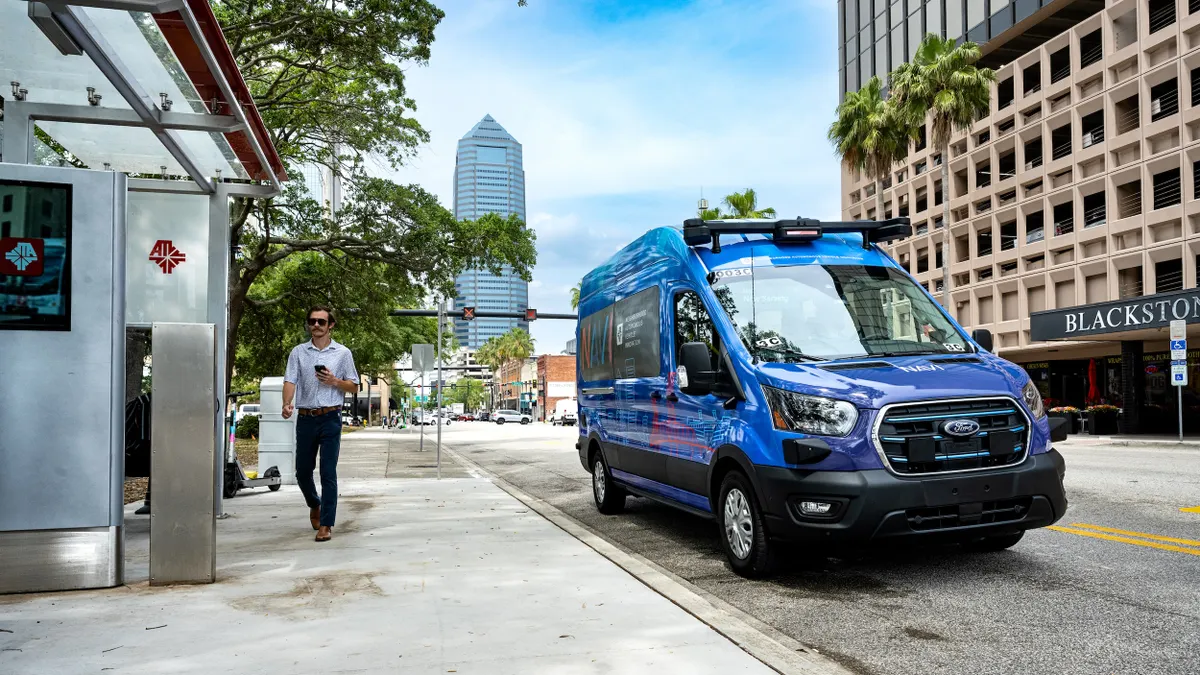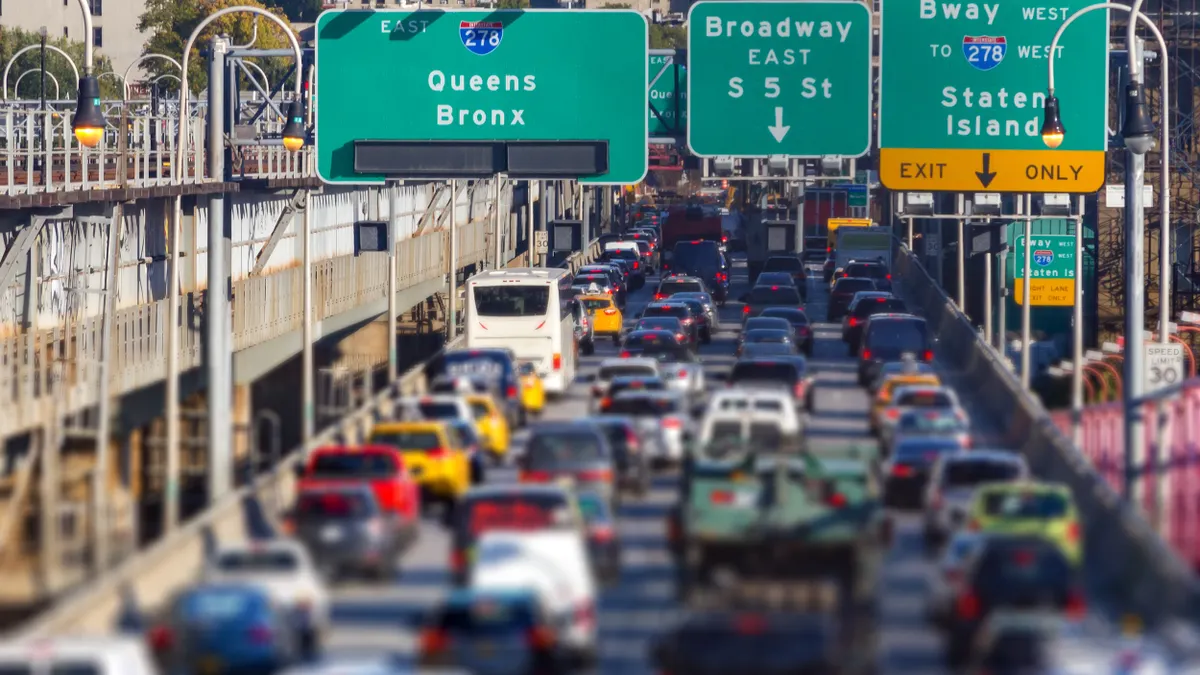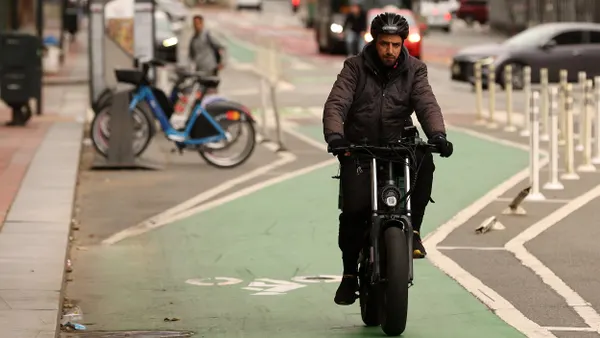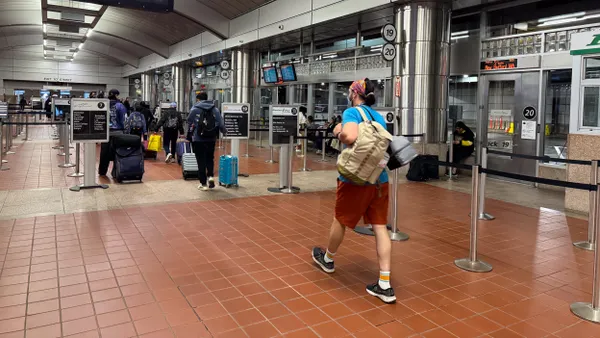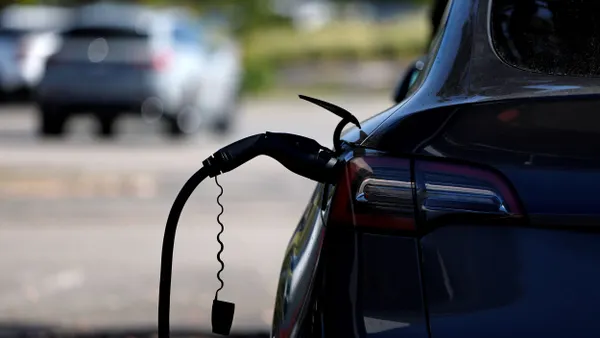Dive Brief:
- The first autonomous public transit shuttle service in the U.S. began operating Monday in Jacksonville, Florida, according to the city’s transportation authority.
- A fleet of 14 customized electric vehicles will operate weekdays along a 3.5 mile route, serving 12 designated stations in downtown Jacksonville, the Jacksonville Transportation Authority said.
- Rides will be free through Sept. 30, 2025. The service is the first phase of a 10-mile autonomous urban circulator to be completed over the next 10 years.
Dive Insight:
Planning for Jacksonville’s urban circulator began with discussions about how to modernize and repurpose the city’s aging Skyway monorail. In 2021, JTA hired construction management firm Balfour Beatty and partner companies to design and construct the project.
"Shared mobility will help solve transportation challenges and build communities by maximizing independence and improving accessibility,” JTA CEO Nat Ford said in a statement.
Among the private sector firms bringing the idea into reality is Beep, which has managed 38 autonomous shuttle deployments across nine states to date. Many of these have been on corporate, university or healthcare campuses, the company’s CEO, Kevin Reid, said in an interview.
Beep operates and maintains the autonomous network for JTA. The company also operates JTA’s Autonomous Innovation Center, a command-and-control center that will store, service, monitor and maintain the city’s autonomous vehicles, Reid said.
“Our software orchestrates the overall system and also does the passenger and safety monitoring inside the vehicles,” Reid explained.
The command center “puts a human in the loop,” Reid said, to assist vehicles that may get confused in some situations. Beep’s software can take inputs from traffic sensors and cameras to help it better understand the bigger picture. “We could see things the vehicle just can't see,” he said.
Nine-passenger Ford e-Transit vehicles were customized with self-driving software from Oxa, an AV technology company. The vehicles meet Buy America and Federal Motor Vehicle Safety Standards, and accommodate people with disabilities, according to JTA.
Reid said they’ve already learned a lot from the month-long test prior to opening the service to the public: When to take a vehicle out of service to be recharged; when to clean and wash the vehicles; how to protect and replace sensors when needed, and much more.
Jacksonville’s foray into autonomous shuttles as public transit may be a harbinger of things to come.
“We're at the very beginning of public transit being disrupted,” Reid said. He sees this sort of microtransit as being more accessible and less costly than existing ride-hail or robotaxis. He also believes there is potential for these shuttles in suburban areas, such as for trips to the market, restaurants and other errands.
In many European cities, public transit is often the first choice for getting around, Reid said. He would like to bring that approach to the U.S., “where you can actually make it safe and convenient and appealing for people” to leave their cars at home.



